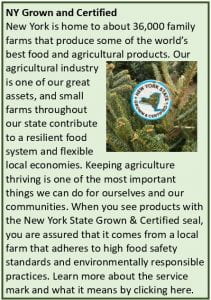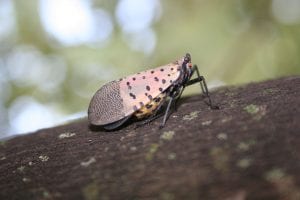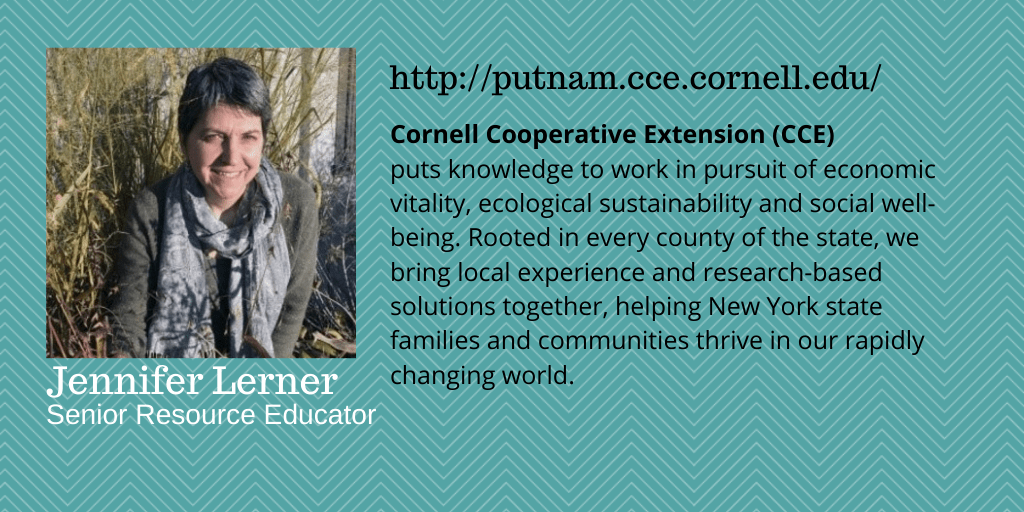“Freshly cut Christmas trees smelling of stars and snow and pine resin, inhale deeply and fill your soul with wintry night.” – John Geddes
 Fresh cut Christmas trees look and smell beautiful. But did you ever stop to consider how these and other agricultural products support local businesses and local economies? It’s hard to see the effect directly: you go out, cut your own tree or pick out a tree from a local nursery or garden center. You see other households doing the same, just like selecting produce at the grocery store. But unlike produce at most grocery stores, locally grown Christmas trees are part of a shorter supply chain. In the case of the local cut-your-own tree farm you are paying the grower directly. Or at the garden center, the business has contracted to purchase the trees directly from the grower. Both put more money into the hands of the grower and support local economies.
Fresh cut Christmas trees look and smell beautiful. But did you ever stop to consider how these and other agricultural products support local businesses and local economies? It’s hard to see the effect directly: you go out, cut your own tree or pick out a tree from a local nursery or garden center. You see other households doing the same, just like selecting produce at the grocery store. But unlike produce at most grocery stores, locally grown Christmas trees are part of a shorter supply chain. In the case of the local cut-your-own tree farm you are paying the grower directly. Or at the garden center, the business has contracted to purchase the trees directly from the grower. Both put more money into the hands of the grower and support local economies.
 To give an example, Putnam County Christmas tree grower, Cockburn Farms in Garrison, depends on the sales of Christmas trees and other agricultural product to make a living. This income pays for labor, for the services of local contractors, for groceries, and, well, you get the picture: the dollars we spend purchasing these trees trickle into a local New York State economy. Small farms have been shown to create a 2.12 economic multiplier for their local economies in New York State.1 So for every dollar you spend, the money fans out into paying labor or making purchases that keep others employed. In addition to the economic multiplier for local economies, An American Farmland Trust Cost of Community Services study showed that in a local Hudson Valley county, agriculture and agricultural land costs $0.17/Acre in services compared to a home, which requires $1.23 in services
To give an example, Putnam County Christmas tree grower, Cockburn Farms in Garrison, depends on the sales of Christmas trees and other agricultural product to make a living. This income pays for labor, for the services of local contractors, for groceries, and, well, you get the picture: the dollars we spend purchasing these trees trickle into a local New York State economy. Small farms have been shown to create a 2.12 economic multiplier for their local economies in New York State.1 So for every dollar you spend, the money fans out into paying labor or making purchases that keep others employed. In addition to the economic multiplier for local economies, An American Farmland Trust Cost of Community Services study showed that in a local Hudson Valley county, agriculture and agricultural land costs $0.17/Acre in services compared to a home, which requires $1.23 in services
 Buying New York grown trees also helps reduce the possible transmission of pests from outside of New York State. Trees are harvested in late fall after most insects have gone to sleep for the winter. There is a small possibility that insects may come along for a ride. If they are local insects, they are a short-term problem: swat them or put them outside. But trees from out of our area can potentially carry new pests into our area.
Buying New York grown trees also helps reduce the possible transmission of pests from outside of New York State. Trees are harvested in late fall after most insects have gone to sleep for the winter. There is a small possibility that insects may come along for a ride. If they are local insects, they are a short-term problem: swat them or put them outside. But trees from out of our area can potentially carry new pests into our area.

A new pest, spotted lanternfly, is currently plaguing Eastern Pennsylvania. This insect lays its eggs on nearly anything: crates, stones, vehicles, trees and other agricultural products. State agricultural inspectors have regulated the movement of products from out of the infested zone to protect New York’s natural and agricultural resources. Transportation of products from outside of our own region or country has caused the introduction of countless invasive insects, other animals, disease-causing pathogens, and plants. If you suspect you have seen spotted lanternfly, or would like to learn more, visit NYS Department of Ag and Markets.
Looking for a local tree? Check out the Christmas Tree Farmers Association of New York’s webpage where you’ll find a farm locator as well as tips for keeping your tree fresh. You will also find a handy review of the species of Christmas trees grown in NYS with their shapes and scents. 2020 has been a tough year for all of us, and as we approach the winter months, we may lean into family traditions and familiar comforts. If a fresh cut Christmas tree is one of your traditions, consider cutting or purchasing a tree from a local grower. You will be helping to build local resilience and make your farmer’s winter a little merrier and brighter, too.
2020 has been a tough year for all of us, and as we approach the winter months, we may lean into family traditions and familiar comforts. If a fresh cut Christmas tree is one of your traditions, consider cutting or purchasing a tree from a local grower. You will be helping to build local resilience and make your farmer’s winter a little merrier and brighter, too.
Resources/Sources
Schmit., T.M., Jablonski, B.R., & Mansury, Y. (2016). Assessing the Economic Impacts of Local Food System Producers by Scale: A Case Study from New York. Economic Development Quarterly 30(4), 316-328
New York State Grown and Certified, web: https://certified.ny.gov/ accessed 10/20/20
Habitat Network, Cornell Lab of Ornithology and The Nature Conservancy, accessed via web 10-30-20, https://content.yardmap.org/learn/brushpiles/
Authors
Jen Lerner, CCE Putnam County; Brian Eshenaur and Dr. Elizabeth Lamb, NYSIPM; and Stephanie Radin, NYS Department of Ag & Markets
